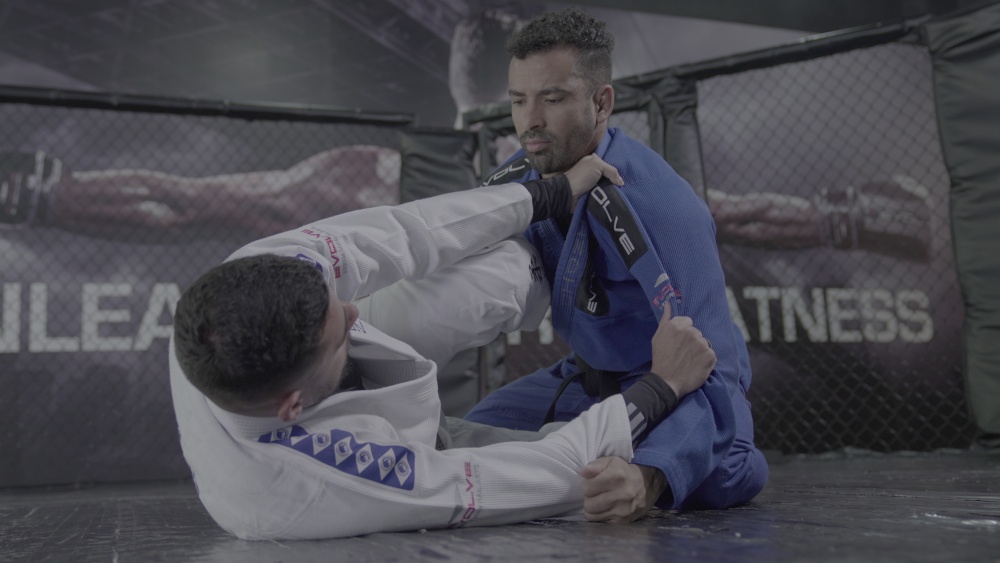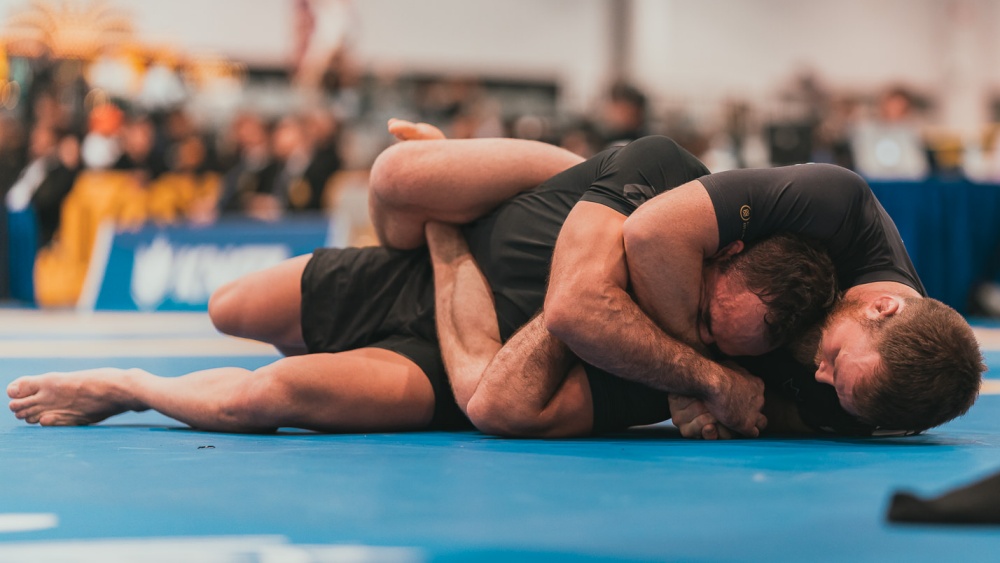There are many guards in Brazilian Jiu-Jitsu. Learning essential guards is a critical part of a practitioner’s development, especially in the early stages as it teaches the basics of positioning, grip fighting, and posture. The guard serves as your defense from pins and submissions. Needless to say, learning to effectively use your body as a shield from these attacks is what separates a good grappler from a mediocre one.
Some say that guard work is perhaps the most important piece in the puzzle, and this is absolutely true. BJJ athletes of all shapes and sizes are expected to have some form of guard to stay competitive in today’s highly technical environment. Today we’ll talk about a variant of the half guard known as the knee shield. This guard is a well-known position used even at the highest levels of competition.
What Is the Guard?
The guard is a fundamentally defensive position where you use your body to defend against your opponent. Similar to a fortress, your guard should be stable enough to minimize the damage inflicted against you, and from there, you can then transition to your offensive techniques. There are many types of guards in BJJ, and it is up to the practitioner to find the one that best suits their grappling style.
It is always a good idea to develop a guard game that can easily be adjusted to both gi and no-gi. This is so you don’t have to spend too much time developing two very distinct styles. The half guard, particularly the knee shield variant of the half guard, is a straightforward position that can be used in all grappling rulesets.
The Knee Shield Half Guard
In this video, BJJ black belt Gustavo Gasperin teaches the basic knee shield position.
The knee shield half guard is where you hook your foot against the opponent’s ankle (a typical half guard approach) and use your other leg to block against the body by placing your knee near the shoulder or chest. The knee acts as a shield and prevents your opponent from putting their weight against your torso. The half guard hook serves as a doorstop and keeps your opponent from disengaging.
Now let’s discuss framing using your arms. Assuming that you are on your right hip, use your left arm to block the opponent’s left shoulder. The purpose of this is that it serves as a second line of defense in case your opponent successfully collapses your knee shield. Your right arm should track the opponent’s left arm by monitoring near the bicep.
You can also use a C grip and grab against the wrist. This is critical as your right arm prevents common counters to the knee shield, such as the cross-face, switch base, and also strikes to the face.
The beauty of the knee shield half guard is that it works even against much larger opponents. If you perform all of these steps correctly, you should be able to stay safe until you decide to move to your sweeps, back takes, and submissions. Gustavo briefly shares basic attacks like the underhook back take, dogfight, and arm drag. Note that he did not break down these offensive techniques as the main point of the video is to understand general concepts of the knee shield half guard.
Remember that this guard is very dependent on these layers of defense. If one of your frames collapses, it is imperative that you reframe immediately to prevent any passing attempts.
Offense From The Knee Shield Half Guard
BJJ black belt Kenneth Brown shares three effective attacks you can attempt from the knee shield position. The first technique is a back take from the cross-sleeve grip. Secure the cross grip as you grip the fabric on the far leg. Shift your hip and place your hooking leg to the opponent’s torso as you drag them at an angle. This should open up the opponent’s back.
The second technique is the scissor sweep from the knee shield. We start with the same gripping sequence as the first technique. This time, use your far leg to unbalance the opponent using a similar leg motion as the scissor sweep. The key here is to keep a tight grip on the far leg by grabbing the pants. Doing this eliminates their ability to post and recover their balance.
The last technique is the backroll sweep, also known as the Shaolin sweep. From the same starting position, remove your knee shield as you extend their arm so that their shoulder touches the mat. Once this happens, maintain your grips and do a backward roll. This should sweep the opponent over effortlessly, landing you in the top side control position.
Building Habits
As mentioned above, a strong knee shield half guard requires you to use your body position and frames to maintain distance. We suggest you first practice the standard entries to the knee shield to become more accustomed to when and how to go the position.
Framing is another crucial aspect that you should drill. Understand that you can intentionally remove your frames if you wish to bait your opponent, but be aware of the pitfalls that may happen if your attacks fail. The half guard is all about staying on a hip. Learn a couple of recovery techniques in case you get flattened out; you can also learn other variants of the half guard as they blend well when applied in sequence. These tips will surely save you countless hours of trial and error.
Conclusion
The knee shield half guard is an excellent tool for both grappling and mixed martial arts. Its use of proper body positioning and frames makes this position a tough nut to crack. Keep in mind that you can always transition to other guards if you wish to do so. At the end of the day, this guard is just another weapon you can use in conjunction with your other preferred positions and techniques.
You may also like:

















